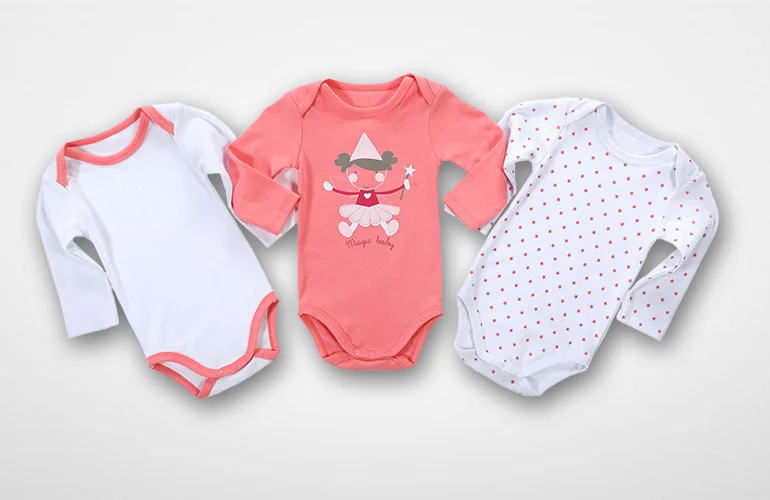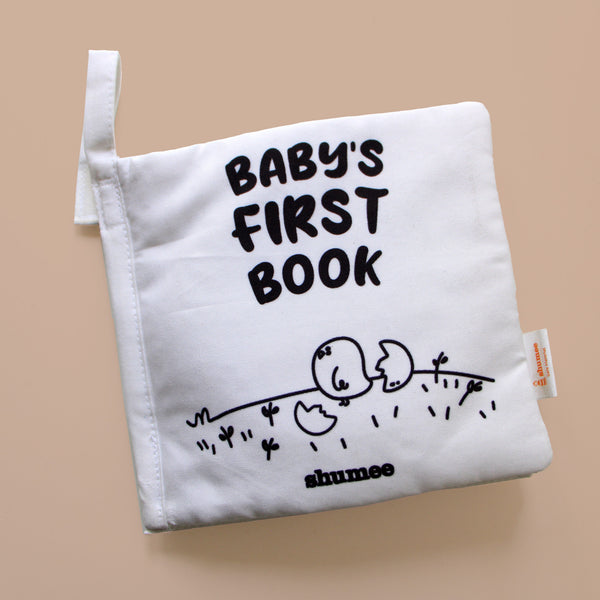Blz baby clothes support practical wardrobe choices
Everything About Baby Garments: Recognizing the Advantages of Comfy Fabrics
Choosing suitable textiles for baby clothing is crucial for their comfort and overall development. Soft, breathable products like cotton and bamboo are preferred for their mild discuss delicate skin. In addition, the fit of child garments plays a notable role in permitting activity. Recognizing these variables can substantially influence an infant's experience in their beginning. What considerations should parents maintain in mind when selecting the very best options for their children?
The Value of Comfort in Child Garments
When picking baby garments, convenience emerges as a vital variable that can not be ignored. Babies have delicate skin and are especially conscious discomfort, which can bring about fussiness and sleep disruptions. The appropriate garments allows for simplicity of movement, important for their all-natural growth as they begin to explore their surroundings. Parents often focus on soft joints, adjustable features, and breathable textiles to ensure their babies stay comfortable throughout the day.
Garments that is easy to put on and take off streamlines dressing routines, reducing stress and anxiety for both infants and moms and dads. The importance of comfort extends past the physical; it contributes to an infant's general wellness and happiness. Choosing garments that prioritize comfort cultivates a positive setting for development and exploration - Blz baby clothes. Eventually, understanding the relevance of comfort in baby clothes can bring about better options that support a baby's requirements during these formative months
Recognizing Fabric Types: Cotton, Bamboo, and More
Selecting the appropriate fabric for child clothes plays a substantial role in making sure convenience. Numerous fabric types provide distinct characteristics that can affect an infant's experience. Cotton, for example, is a preferred choice because of its breathability and gentleness, making it mild against delicate skin. It is easy and additionally long lasting to clean, contributing to its appeal for parents.
Bamboo textile is an additional outstanding option, known for its eco-friendliness and moisture-wicking properties. It helps control temperature and maintains infants dry, which can be especially advantageous during warmer months. Additionally, bamboo is naturally hypoallergenic, minimizing the risk of irritation for sensitive skin.
Other fabrics, such as linen and modal, also add one-of-a-kind advantages. Bed linen is lightweight and breathable, while modal is soft and resistant to shrinking. Understanding these fabric kinds can aid parents make notified options for their infant's wardrobe, promoting convenience and wellness.
The Benefits of Soft Cotton for Child Skin
Soft cotton is commonly hailed as the perfect material for infant clothing, largely because of its gentle touch against delicate skin. This all-natural fiber is hypoallergenic, making it a secure choice for infants prone to allergic reactions or rashes. Unlike synthetic fabrics, soft cotton allows for far better air blood circulation, reducing irritation and discomfort during wear. Its moisture-wicking buildings aid to maintain infants dry, which is crucial for protecting against diaper breakout and other skin issues.
Soft cotton is extremely durable and can withstand constant cleaning, making certain that garments continue to be in excellent condition over time. The fabric's breathability adds to general comfort, enabling infants to relocate freely without constraint. Furthermore, its softness enhances with each wash, improving the experience for both moms and dads and their children - Blz baby clothes. In general, soft cotton offers an excellent combination of comfort, security, and practicality for infant clothes, making it a favored choice among caretakers
Exploring Breathable Fabrics for Temperature Policy
Breathable materials play an important function in regulating a baby's body temperature, complementing the comfort supplied by soft cotton. These materials enable air to circulate, stopping overheating throughout warmer months and preserving heat in cooler problems. Fabrics such as bed linen, bamboo, and moisture-wicking blends are particularly effective in keeping a perfect microclimate for infants.
Linen, known for its natural breathability, assists wick away moisture, maintaining babies comfy and completely dry. Bamboo, on the various other hand, supplies a soft structure along with exceptional thermoregulating properties, making it a popular option for sleepwear.
Moisture-wicking blends attract sweat far from the skin, guaranteeing babies continue to be comfy even during active play. Selecting garments made from breathable textiles not just boosts the infant's comfort however also contributes to total health, making it a vital consideration for caretakers when picking baby clothing.
All-natural vs. Artificial Materials: What to Choose?
When choosing infant clothing, the selection in between natural and synthetic products raises important factors to consider. Variables such as breathability, convenience, durability, and ecological effect play a crucial role in this choice. Parents need to consider these elements to assure the finest alternatives for their child's demands and the earth's health.
Breathability and Comfort
Picking the best materials for baby garments significantly impacts a youngster's comfort and overall health. Breathability is a Visit Website vital element in ensuring that infants remain comfortable throughout the day. Natural fabrics, such as cotton and bed linen, are understood for their remarkable breathability, allowing air flow and moisture absorption. This aids regulate a baby's body temperature, maintaining them cool in warm problems. On the various other hand, synthetic products, while typically more budget-friendly and available in different designs, might catch heat and wetness, possibly causing discomfort. When choosing fabrics, moms and dads should think about the environment and their child's skin level of sensitivity. Ultimately, focusing on breathable, soft materials will improve an infant's convenience and assistance healthy and balanced skin advancement.
Sturdiness and Longevity
While convenience is important, the durability and durability of infant garments are similarly essential aspects for moms and dads to consider. When choosing in between natural and artificial materials, parents have to evaluate the benefits of each. Natural materials like cotton and bed linen are often commended for their gentleness and breathability, making them comfortable against a child's delicate skin. Nonetheless, they may put on out much faster, particularly with constant cleaning. On the other hand, synthetic materials such as polyester and nylon can supply improved sturdiness and resistance to reducing or fading, making them a sensible option for active babies. Inevitably, choosing the appropriate fabric includes stabilizing convenience with the demand for clothes that can withstand the rigors of everyday deterioration, ensuring they last with several usages.
Ecological Influence Considerations
The environmental effect of baby clothes is progressively ending up being a considerable consideration for moms and dads. When choosing in between synthetic and all-natural materials, parents typically consider the environmental footprint of each alternative. Natural fibers, such as organic cotton and bamboo, are biodegradable and normally produced with fewer dangerous chemicals, making them more lasting choices. On the other hand, synthetic products like polyester and nylon are originated from petroleum, adding to contamination and microplastics in seas. Nevertheless, synthetic materials can offer durability and moisture-wicking properties, which may be beneficial for energetic babies. Inevitably, parents have to stabilize ecological interest in the useful demands of their babies, taking into consideration factors such as convenience, treatment, and long life while intending for environmentally friendly choices in their baby's wardrobe.
Effect of Material on Baby's Mood and Wellness
The selection of textile in infant clothes greatly influences a youngster's state of mind and total a knockout post wellness. Breathable and comfy materials can improve a child's convenience, while sensory-sensitive infants might react adversely to harsh or synthetic fabrics. Comprehending these factors assists caregivers pick appropriate clothing that supports a positive psychological setting.
Textile Breathability and Comfort
Selecting breathable fabrics for baby clothes is vital, as it significantly affects a kid's comfort and overall state of mind. Breathable materials, such as cotton and linen, enable air flow, helping to control the child's body temperature level. This is especially crucial to avoid getting too hot, which can cause irritability and uneasyness. When babies feel comfortable in their garments, they are most likely to be tranquil and web content. In comparison, non-breathable fabrics can catch warm and wetness, creating discomfort and potential skin irritabilities. Prioritizing breathable options not just enhances physical wellness however also adds to a more positive mood. Picking the right fabric is necessary for promoting a supporting atmosphere that sustains a baby's development and joy.

Sensory Level Of Sensitivity Considerations
Material options not just influence breathability yet also play a crucial function in a child's sensory experience. Children are specifically conscious appearances, and the right fabric can enhance their convenience and total state of mind. Soft, all-natural materials like cotton and bamboo are commonly favored, as they provide a mild touch against the skin, lessening irritability. Alternatively, artificial or harsh textiles might lead to discomfort, triggering fussiness or distress. This level of sensitivity can influence exactly how a child engages with their environment. Moms and dads require to be mindful of textile choice, as it can significantly impact a child's emotional well-being. Ultimately, selecting comfortable fabrics is crucial for promoting a favorable sensory experience, adding to a satisfied and pleased infant.
Tips for Selecting the Finest Baby Clothing for Convenience
When picking child garments for convenience, moms and dads ought to focus on soft, breathable products to ensure their youngster remains cozy throughout the day. Fabrics like cotton and bamboo are superb choices, as they permit air flow and lessen inflammation against sensitive skin.
Additionally, moms and dads need to think about the fit of the apparel; loose-fitting garments give adequate room for activity, making sure that children can explore without restriction.

Parents should also consider the environment; layering options are useful for fluctuating temperature levels, enabling easy modification.
Finally, going with easy-to-use fasteners, such as snaps or zippers, can improve clothing and diaper modifications, additionally improving convenience. By focusing on these elements, parents can develop a comfy wardrobe that sustains their kid's health and development.
Frequently Asked Inquiries
Exactly how Commonly Should I Laundry My Infant's Garments?
Experts advise washing a child's garments after every wear, particularly if they become soiled. For delicate skin, using mild detergents and preventing material conditioners is suggested to maintain textile integrity and lessen irritability threats.
What Sizes Should I Purchase For My Expanding Child?
For an expanding baby, it is suggested to get dimensions that suit their existing age and weight, deciding for a dimension larger when doubtful. This assures comfort and long life as they remain to expand.
Exist Child Clothing Suitable for Sensitive Skin?
Yes, there are child garments designed especially for sensitive skin. These garments generally feature soft, breathable products like natural cotton and prevent severe dyes or chemicals, making sure convenience and decreasing the risk of inflammation for fragile skin.
Can Baby Garments Be Securely Dried Out in a Dryer?
Baby clothing can normally be securely dried in a dryer, but it is important to inspect treatment tags. Making use of a low warmth setting assists stop contraction and preserves the integrity of the fabric.
Exactly How Can I Inform if Infant Clothing Fit Effectively?
To identify appropriate fit for infant clothing, one need to inspect for snugness without restricting activity, warranty joints straighten with shoulders and crotch, and validate that apparel allows for easy dressing and undressing without extreme tightness. Blz baby clothes.
Selecting ideal textiles for child clothing is vital for their comfort and total growth. Choosing the best fabric for infant garments plays a substantial duty in making sure comfort. Breathable fabrics play a necessary function in controling a child's body temperature, complementing the convenience given by soft cotton. Comfy and breathable products can boost a i loved this child's comfort, while sensory-sensitive babies might respond adversely to extreme or artificial materials. Selecting breathable fabrics for infant clothes is crucial, as it significantly affects a kid's comfort and general state of mind.